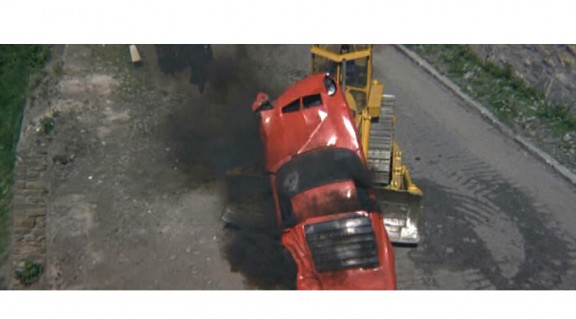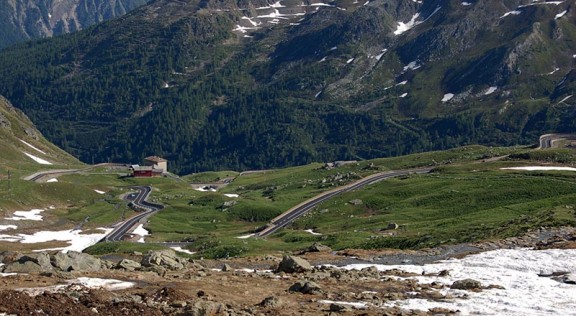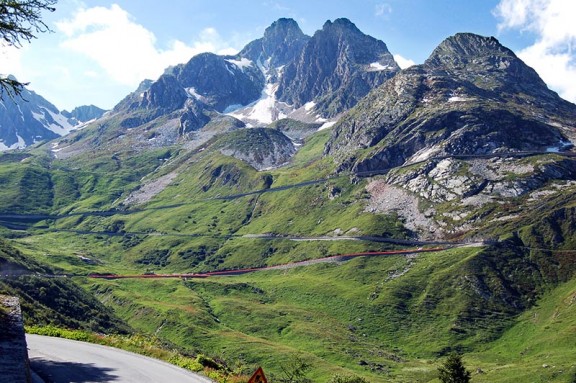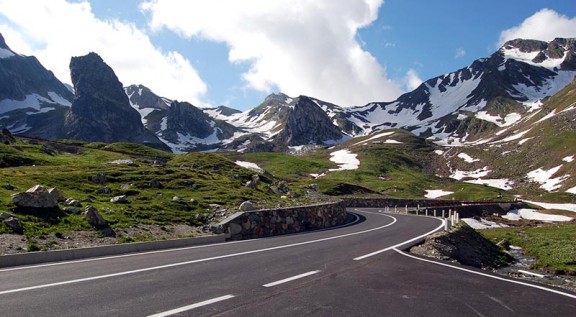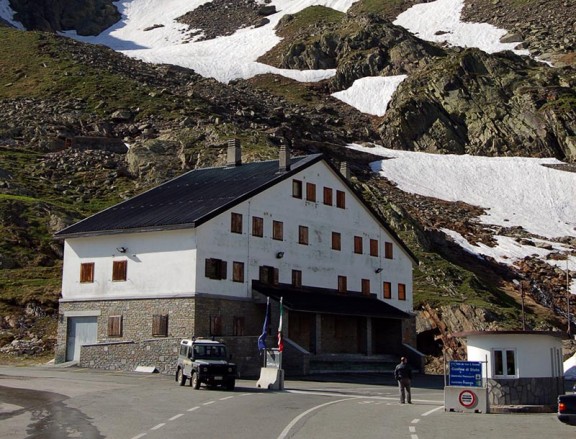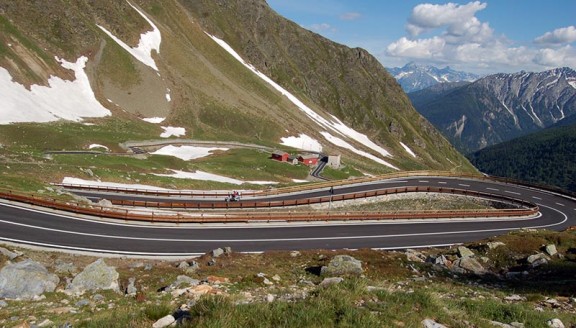By Budd Stanley
Who could forget the classic opening to The Italian Job? No, not Marky Mark walking through a Venetian piazza. The one from 1969 starring Michael Cain that opened with Rossano Brazzi carving his way up an Italian Alp in a classic Lamborghini Miura to the musical mixture of a Lamborghini V-12 and the song “On days like these” performed by Matt Monro. Well, that special bit of road that Brazzi was enjoying until his untimely run-in with an ill placed bulldozer, was the Grand-Saint-Bernard Pass. After my adventures on the Col de Turini (see story), I travelled north to experience the Grand-Saint-Bernard (lets call it the GSB) and ironically hit Turino at the hight of rush hour. Like Minis full of gold loot, I too struggled to get my Z4 through the endless maze of traffic filled streets, for on the other side of the city lay the alps and the town of Aosta which leads to the hidden jewel.
Linking Aosta, Italy, to Martigny, Switzerland, the pass is a much more interesting alternative to the toll tunnel that goes through the mountain. Experience has taught me when new roads are built under old ones, it’s a good sign that traffic will be light on the long road, and this was the case when I made the climb into the alpine border lands that mark the Swiss-Italian territories. Taken mid-evening on a weekday, I nearly had the entire pass all to myself, even the motorbikes and cyclists were few and far between, a trait the GSB is known for.
The route starts in the mountain valley leading north from Aosta, Italy, and begins as a winding country two-lane road. At the base of the Valais Alps, the road narrows to a single lane through a heavy wood, with rock barriers, so careful anticipation of oncoming is required. However, it all got interesting once I punched through the tree line and out into the alpine, a spectacular manmade line that traverses the side of the mountain four times before loping over the rocky crest. The expanse of the valley heeds a great view of any impeding traffic, while the narrow winding lane is littered with only a few sharp hairpins to give the driver an abundance of challenges.
Over the first crest, and I was greeted with a feast of meandering corners slowly making their way up to the famous tunnel of death just below the first peak. It is in this magnificent bowl that all the filming took place for the original Italian Job. No wonder, as this road is by far the most beautiful I’ve ever seen in terms of cosmetics, the route is a constant joyful challenge and the landscape is breathtaking. As I carved my way through the natural obstructions, I couldn’t help but whistle the iconic song to myself, with a disappointed look coming from my girlfriend from across the cabin. Yeah, it’s a cheese ball song, but at this particular moment in time, and in this particular place, no other song seemed worthy.
I have to hand it to the Italians, the condition of the road was immaculate. It looked as though it just had a complete makeover prior to my arrival. The tarmac had that fresh black color with bright white lines, and the entire route up to the peak had clean, stained-timber Armco barriers that would act more for decoration than as a savior if anyone were to leave the road. Rightly so, several pullouts have been created for drivers to take a break from sweaty palm driving, and to enjoy the rocky outcroppings, alpine meadows and brooks that make this place just that much more special. At the peak lies a mountain top lake, still half covered in ice, as well as the usual touristy kiosks, hotels and restaurants.The peak of this Alp represents the Swiss-Italian boarder, manned by two uniformed agents and a sharp looking Land Rover Defender. With a nod, I was waved through and began the decent down the Swiss side of the pass.
The Swiss side is a stark contrast to that of the Italian, as the road was very narrow and bumpy. Nerves are tested with much larger drop offs and nothing more than a few stones planted on the side of the road to keep you alive – maybe.
Arriving in Martingy, Switzerland, the end point of the pass, I had time to reflect on this beautiful stretch of road. While it may not have been the greatest driving road in the series, it still made for a truly special driving experience. Breath taking views, great road construction, history, and a great mix of aggressive and challenging driving conditions all make the GSB is a must if you find yourself in northwestern Italy, or southwestern Switzerland.
Total Distance: 74.8 km
Altitude: 2,469 m
Best time to go: Pass is only open between June and September.
Places To Stop: Pullout just over the tunnel entrance for spectacular views (27 km), Swiss Border, kiosks and Inns at the top of the Col (33 km), Pullout near tunnel ventilation shaft with a history lesson of Napoleon’s expedition and great views (36 km).
Starting Point: Coordinates 45°44′28″N – 7°18′51″E. Beginning in Aosta, Italy, take the E27/SS27 (Ave Grand-Saint-Bernard) north into the Alps. At 19 km, leave the tunnel route and follow SS27 over the pass. At 33 km is the summit as well as the Swiss border, the route then tracks down the Swiss side joining back up with the new route and continues on to Martigny, Switzerland.
Finishing Point: Coordinates 46°5′16″N – 7°3′19″E, Martigny, Switzerland.
Road Type: Smooth flowing two lane alpine road on Italian side that turns into a rough and narrow lane that slows due to terrain.
Warnings: Due to altitude and snowfall the pass is only open during summer months. The Swiss side of the pass has large drops with only the occasional stone to prevent long drops off the road.

